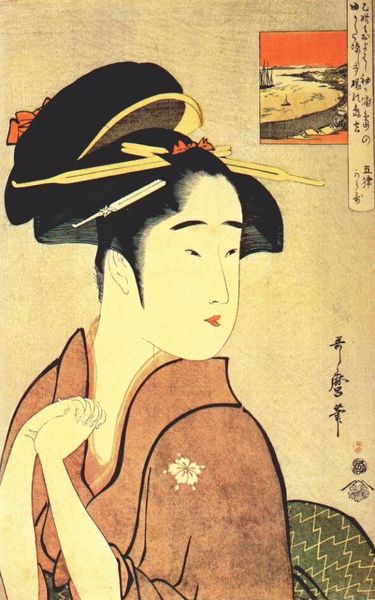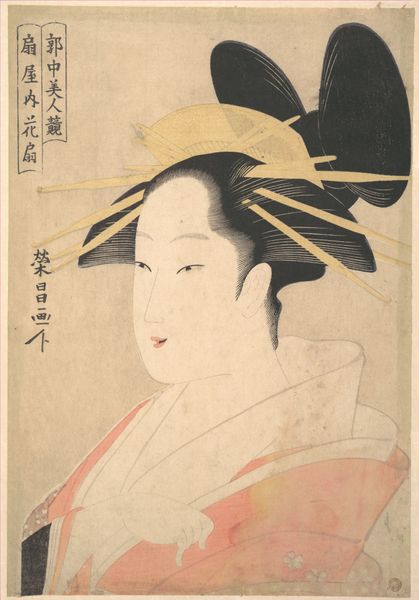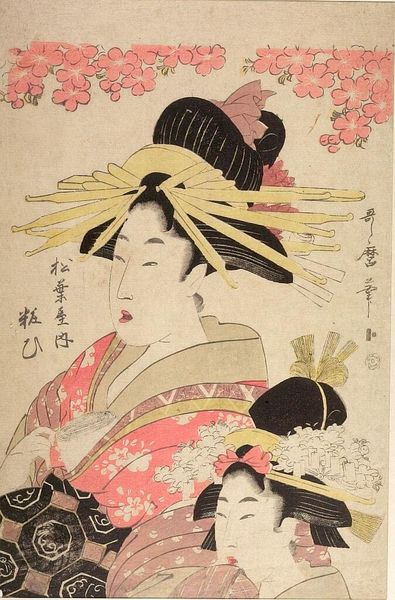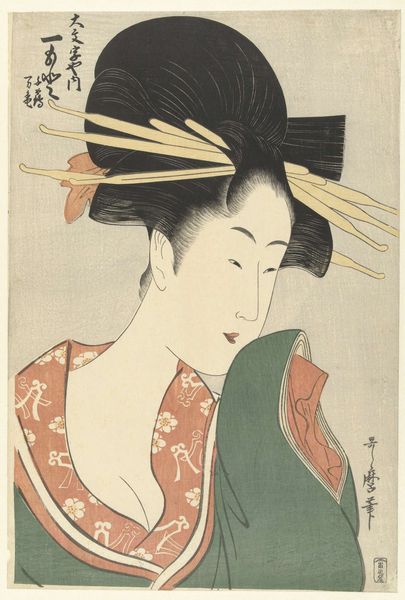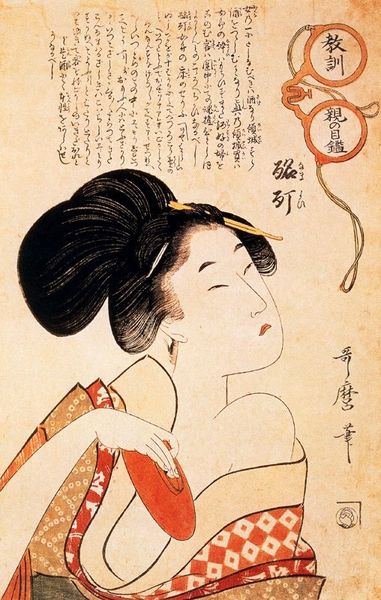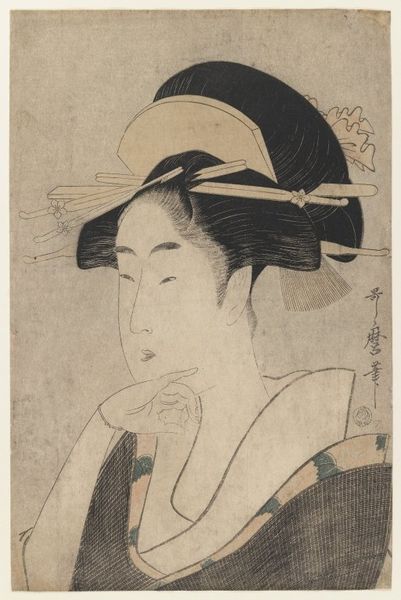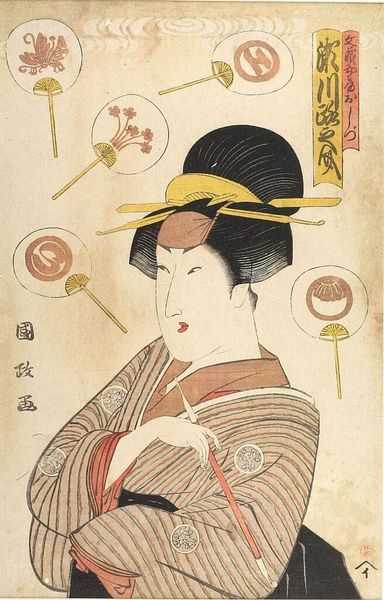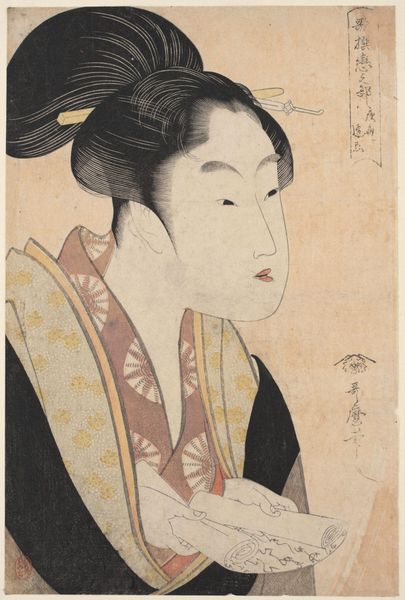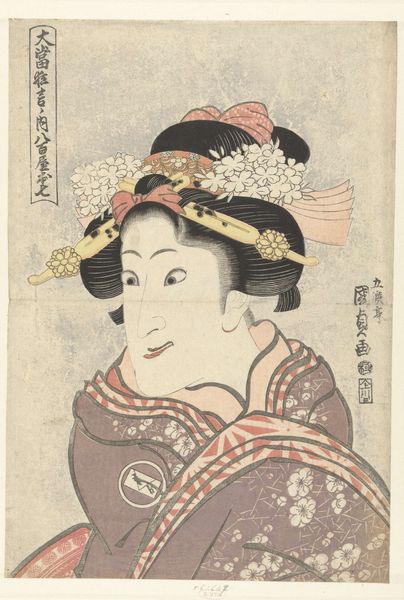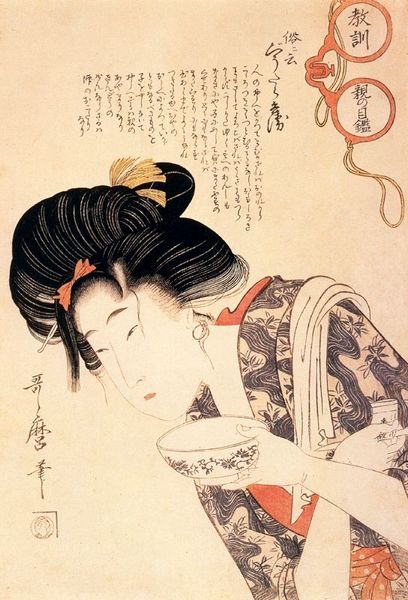
Courtesan Wakamurasaki of the Matsubaya (Matsubaya uchi Wakamurasaki) ,Ukiyo-e woodblock print in ""aiban"" format; ink and color on paper"
0:00
0:00
Dimensions: Asian and Mediterranean Art
Copyright: CC0 1.0
Editor: Here we have Kitagawa Utamaro's "Courtesan Wakamurasaki of the Matsubaya," a Japanese woodblock print from the late Edo period. The delicate lines and muted colors give it a sense of serene melancholy. What strikes you most about this piece? Curator: This print offers insight into the complex social dynamics of the Edo period. The courtesans, like Wakamurasaki, occupied a unique position. They were both objects of desire and cultural icons. The "floating world," or ukiyo, represented a space of artistic expression and social critique. How does this context shift your perception of the artwork? Editor: It makes me consider the agency of the subject. Was this a romanticized portrayal, or did it reflect the realities of her life? Curator: Exactly. The print blurs the lines between representation and reality, inviting us to question the power structures at play in the art world and beyond. It reveals how images of women are used to reflect social hierarchies and cultural ideals. Editor: I see how the print provides not just aesthetic value, but also social commentary. Curator: Precisely. We're reminded of the importance of considering the historical context when interpreting any artwork.
Comments
No comments
Be the first to comment and join the conversation on the ultimate creative platform.
